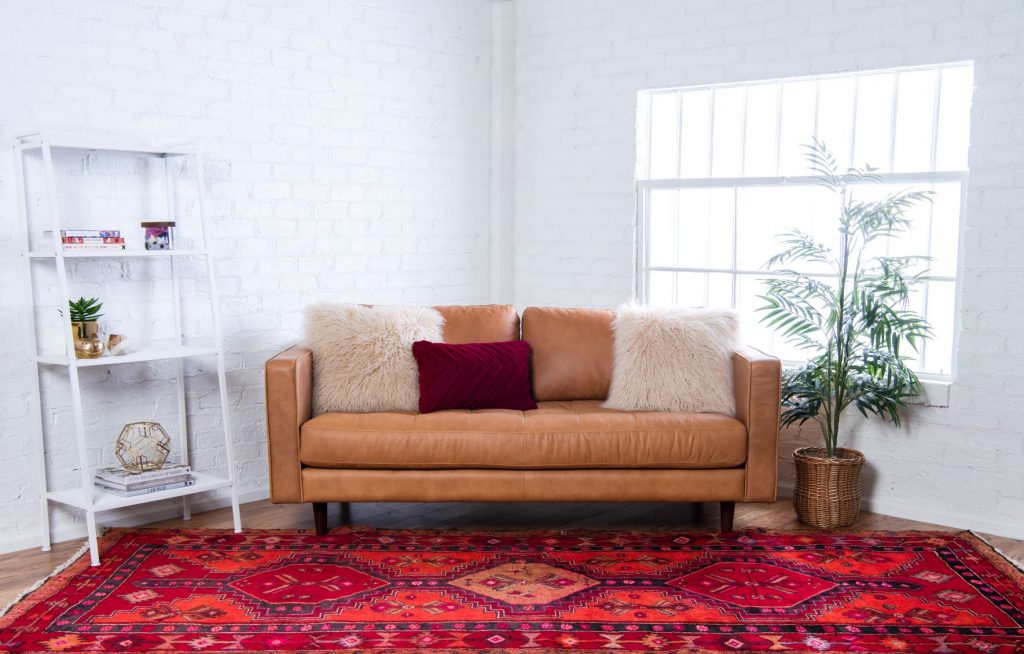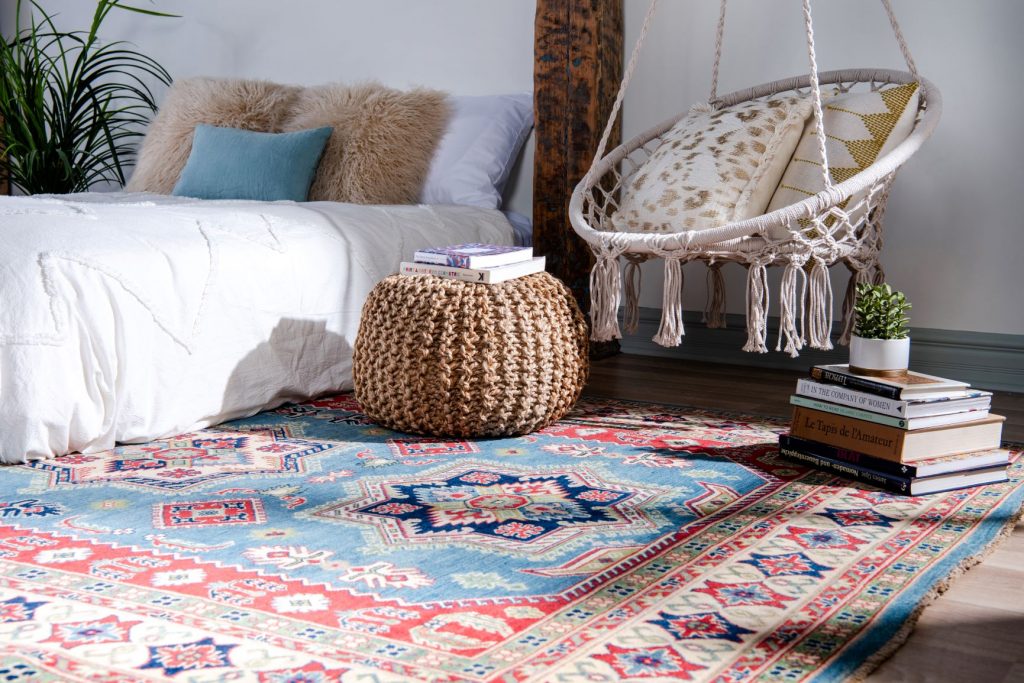In the historic Azerbaijan province, not far from the Caspian Sea lies the city of Ardabil. It is the capital of Ardabil Province, which derives its name from the sacred Zoroastrian book. In the sacred Avesta, Ardabil means high holy place. It is fitting that such a region would give rise to works as prized as Ardabil Persian rugs are.
Origins of Ardabil Persian Rugs
The provenance of a Persian rug does not merely identify the city in which it was made. It characterizes the culture, environment, and people of the region that gave rise to that particular rug.
Ardabil (sometimes written Ardebil) sits near the western edges of the Caspian Sea. The region is known for its lush surroundings, cool climate and the beautiful Sabalan mountains in the Lesser Caucasus mountain range. People from all over the world travel to the region for its natural beauty and to benefit from its countless therapeutic mineral and hot springs.
The most culturally important site in Ardabil is the Sheikh Safi al-Din Shrine, registered by the UNESCO World Heritage list since 2010. Sheikh Safi al-Din established the Safaviyya, an Islamic Sufi order which, over the course of almost 200 years, grew in prominence. The Safaviyya order gained military and political power and eventually gave rise to the Safavid Dynasty. Once in power, the Safavid rulers established the shrine as a place of pilgrimage. The two most famous carpets in the world were woven for the express purpose of enhancing the shrine in the 1600s.
Famous Ardabil Carpets
Two of the the oldest known rugs in the world are Ardabil Persian rugs. The largest of the two measures 34 by 17 feet and is on display at the Victoria and Albert Museum in London. It likely took a team of 10 skilled weavers several years to produce a handmade rug so large. The densely woven wool pile of this magnificent carpet contains roughly 330 knots per square inch. The Ardabil Carpet’s carefully laid motifs include gorgeous scrolled patterns with swirling leaves and flowers. A golden 16-point medallion is the focal point in the center of the rug. The design incorporates more than 10 colors made of natural dyes from ingredients such as turmeric, pomegranate, indigo, and tea.
The rug is so significant and valuable not only because of the quality weave and artful design, but also for the precise date emblazoned in a cartouche at the bottom of the carpet. It is the Persian Calendar equivalent of the year 1539. According to the Victoria and Albert Museum, “the carpet was still in the shrine of Shaykh Safi al-Din in 1843, where it was seen by British visitors. An earthquake severely damaged the shrine about 30 years later. That is when the carpet was sold to a Manchester carpet firm, who in turn put it up for sale in 1892.” The museum acquired the piece in 1893. The second, almost identical rug, was gifted to the Los Angeles County Museum of Art in 1953 by J. Paul Getty.
Contemporary Ardabil Persian Rug Design & Color
The traditional Mahi (fish) design is perhaps the most common and popular. However, more modern hybrid Ardabil rugs are a close second. Persian macro designs and geometric Caucasian motifs are blended together in these hybrids. They are sometimes referred to as Persian Kazak rugs.
Another common Ardabil layout is one of numerous linked diamond-shaped medallions or all-over octagonal shapes. The hooked medallion Ardabil is different from the traditional Mahi design in that the north and south tips of the medallion form a hook. Floral lattice, Konagkend, Herati, Meshkin, and Shahsavan are some of the other popular Ardabil designs.

Traditional Ardabil rugs tend to have either a red, blue, or rust colored field complemented with accent colors like ivory and brown. Modern designers and weavers have contributed to the evolution of traditional designs by adding eye-catching bold non-traditional colors such as green, purple, orange, and turquoise to the mix.
Weaving Method
Ardabil weavers start with a cotton warp to ensure a durable foundation. They use high quality thick wool to weave original pieces using Azerbaijani knots. Occasionally Ardabil rugs incorporate silk into the wool pile to highlight or create focal points in the rug’s design. The average knots per square inch (KPSI) for an Ardabil rug is 120, but borders tend to be slightly denser to prevent fraying edges.
Styling Ardabil Rugs Today
Geometric patterns and saturated tones make Ardabil rugs a perfect fit for just about any space. Many designers love creating a cynosure using these antique carpets in modern, minimal spaces. The brown and cream tones of the Caucasian patterns provide a gorgeous contrast to neutral spaces. The more traditional Mahi design Ardabils seamlessly pull together rooms in more traditional homes. These rugs work well in homes with wooden elements.
The perfect spot for a vintage Ardabil carpet is quite possibly in front of a stone fireplace. A stone house is suddenly unified with the addition of an Ardabil rug. The geometric patterns and deeper tones found in provincial designs of hybrid Persian Kazaks also work well in natural surroundings.

Top-quality materials give these carpets durability and longevity. Wool is naturally dirt-resistant which makes Ardabil rugs highly resistant to wear and tear. Meshkin runners with their geometric all over patterns and heavy wool piles are quite durable. That makes them a very popular choice in high traffic areas. However, Ardabils also hold value far beyond their usefulness and long-lasting quality. Some rug connoisseurs buy these sumptuous rugs as collectibles and create a legacy by passing them down for generations.
Ardabil carpets, with their primitive symmetrical patterns and deep set color range, are perfect for anyone who seeks beauty and depth without pretension.
